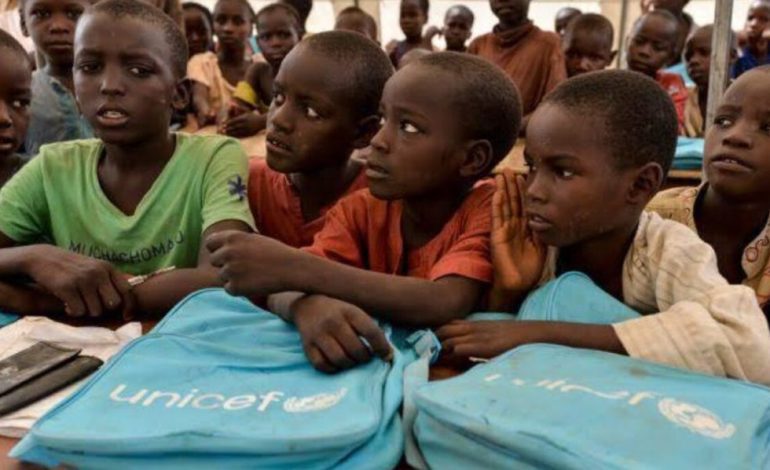Out-Of-School Children Rate Soars In Osun

Concerns As Out-Of-School Children Rate Soars In Osun, Others
There is growing concern over the escalating number of out-of-school children in several Southwestern states, including Osun, Oyo, Lagos, Ogun, Ondo and Ekiti.
United Nations Children’s Fund (UNICEF) in a statement on Wednesday noted a dropout rates of 8-15% among adolescents in primary and secondary schools within the Southwest region, which encompasses the states of Ekiti, Oyo, Lagos, Ondo, Osun, and Ogun.
UNICEF’s Education Specialist, Azuka Menkiti, disclosed during a recent two-day regional stakeholders meeting in Ibadan, which focused on strategies to retain out-of-school children and improve transition and completion rates in education.
The meeting brought together key players in the education sector to discuss and develop actionable plans to address these pressing issues
READ ALSO
●Hackers Harvest GTB Customers Data
●N90bn Hajj Subsidy: EFCC Detains NAHCON Chair
During her interaction with journalists, Menkiti emphasized the current completion rates for primary and secondary education among adolescents aged 10 to 18, revealing that 92% of students complete primary school, while 85% make it through secondary school. These figures, while promising, still highlight a notable gap in education retention, which remains a cause for concern.
Menkiti expressed her concern about the potential implications of this gap, warning that it could have serious consequences for the education sector if it is not addressed urgently.
She stressed the importance of prioritizing efforts to ensure that all students are not only retained in school but also complete their education.
She said: “This is a two-day regional meeting for the Southwest zone of Nigeria. UNICEF is working to support states in enhancing retention, transition, and completion of secondary education for adolescents.
“This effort builds on about 10 years of intervention in girls’ education, which has demonstrated successful, scalable interventions to bring girls to school and keep them there.
“UNICEF is supporting states to identify and address the factors driving dropout rates among adolescents.
“When we talk about out-of-school children, we look at it from different perspectives: those who have never enrolled in school, those likely not to enrol, and those who have dropped out.
“We are particularly focused on adolescents at risk of dropping out or not completing secondary education, especially in Southwestern states where enrollment rates are high but retention, transition, and completion rates need improvement.
“At this meeting, we have commissioners, SUBEB chairmen, permanent directors, and secretaries from various Southwest states, who have come together to review successful intervention models and adapt them to their state contexts.
“We are advocating for these states to commit to ensuring adequate funding for secondary education and to develop credible data to support advocacy efforts for improving secondary education.
“For UNICEF, our work in education is focused on three core areas: system strengthening, expanding access to education, and supporting states in creating quality learning opportunities for children and adolescents.
“In terms of system strengthening, we are emphasizing evidence generation. To effectively advocate for support, states need credible data.
“We are also supporting states in developing plans and policies to create opportunities for children to transition to and complete secondary education.
“In terms of access, we are working with community structures, religious leaders, and others to address social norms that keep children out of school.”

Sodiq Lawal is a passionate and dedicated journalist with a knack for uncovering captivating stories in the bustling metropolis of Osun State and Nigeria at large. He has a versatile reporting style, covering a wide range of topics, from politics , campus, and social issues to arts and culture, seeking impact in all facets of the society.









